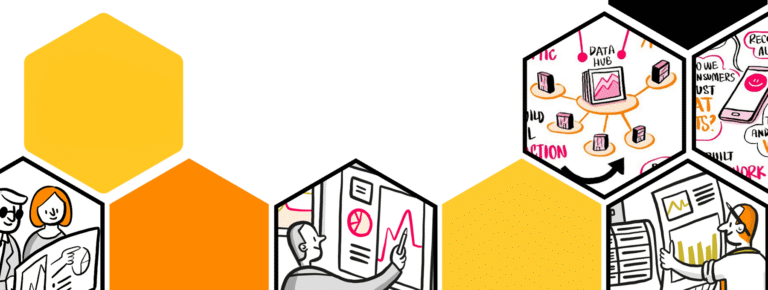Rapidly evolving customer expectations are setting new baselines for merchants, one digital experience at a time. This has been fuelled by the blurring of the physical and digital worlds in our mobile-centric society. Just take a look at how innovative brands like Nike now approach retail. The focus is shifting from ‘sales’ to ‘experiences’ at a rapid pace.
This is, of course, having a substantial effect on focus from a business perspective. But even if slow compared to consumers, it is moving along as well. In a previous post—The Business of Customer Experience—I make the case that customer experience focus (CX) is a competitive differentiator (glaringly obvious right?), but because of this rapid evolution, I would argue that it has moved into a business imperative status. This isn’t solely based on intuition—there’s solid data to prove the point too. For example, in a recent survey of 1,024 companies, Forrester found that CX-driven companies have the highest median three-year growth in sales, the highest levels of customer satisfaction, and the highest levels of employee satisfaction. Well if this is the effect of a CX-focused business I would be going all in, especially if you are in or supported by digital commerce.
What is the base for a CX initiative and the key for its success? (clue: take a look at the title) You guessed it: customer obsession. Obsession might be a strong word but it’s crucial to be obsessed here, always listening and pushing to provide the best possible experience for your customers.
Now let’s take a look at 3 building blocks that underpin this obsession and that might give you ideas on how to feed yours.
1. It all starts with Data
Simply put, if you don’t know your customers, you won’t be successful. There are of course shortcuts and luck, but that won’t keep you in business for long nor your customers happy.
It’s loyalty 101: The one-time transaction might bring in some short-term results, but it’s the true fans of your brand and products who will be lifelong shoppers.
The focus on data, especially within marketing, is not a new thing by any means. But the trend to be data-focused, especially around the customer, is now an emerging trend in many organisations. It also comes with the understanding of urgency, especially to harness the data for commercial gains. In a recent report by Adobe and Econsultancy (Annual 2019 Digital Trends report) there are some clear priorities put on this area:
“The larger organisations surveyed for this research (£150m+ annual revenue) regard ‘data-driven marketing that focuses on the individual’ (24%) as the single most exciting opportunity for their organisations in 2019, ahead of ‘optimising the customer experience’ (19%) in second place.”
“Marketers surveyed for this research are particularly focused on data. Most marketers (55%) expect ‘better use of data for more effective audience segmentation and targeting’ to be among their top three organisational priorities during 2019. The second most popular choice for marketers is ‘improving customer intelligence and insights for a holistic customer view’ (42%), another data-related discipline.”
But this data doesn’t come out of thin air, unfortunately. For many organisations, acquiring and optimising the use of data can seem overwhelming, even if they’ve collected and tried to work with it for some time. There is no magic formula that makes this happen I’m sorry to say, but if you follow these 3 principles you will be closer to getting real customer insights:
- Set clear goals and KPIs for what you are aiming to achieve: business, brand and customer.
- Leverage technology and AI to do the heavy lifting (crunching, predictions etc) and connect the dots between data points.
- Have an expert or team (internal preferably) to focus on making sense of the data (analytics) and create actionable insights. The keyword is actionable—be able to take concrete action from insights.
Need to start making sense of your data? Our Strategy & Consulting team can help. From defining key customer segments to setting goals and from analytics to strategic roadmaps, our team is here to help you exceed your commerce ambitions. Contact me today!
2. Understand the full customer journey
Just to make sure we are on the same page here; when we talk about the customer journey, this is not the buying journey, not the sales funnel but the actual customer journey with your brand. This means the end-to-end path of the customer through all the touchpoints with your brand—pre and post-purchase.
So if you’ve not mapped the customer’s journey—or are working with parts of the journey like a sales funnel—it’s time to create or consolidate a complete view.
Some basics need to be in place to make this happen. Here are the most important ones:
- Goals and KPIs: clear business-derived goals that give clarity on what is needed to be achieved.
- Defined key customer segments (or personas or cohorts) based on goals.
- Data, data, data that can be turned into insights. If you don’t have it go get it (customer research).
- Resources: you need people with expertise and time. Preferably internal resources, but agencies or consultants can help you get on track quickly and efficiently.
Yes, it might seem like quite a lot but the upside is bigger than you think. The business effect is proven—but even more importantly the customer expects a personalised and seamless experience.
Looking at priorities for businesses, there is certainly a focus in this area as well.
“Customer journey management’ (33%) is the top digital-related priority for larger organisations. For these larger companies ‘delivering personalised experiences in real time’ (37%) is the most exciting prospect in three years time.” (Econsultancy/Adobe Annual 2019 Digital Trends report)
And for the customer, “Experiential Commerce” is absolutely a thing and is increasingly expected. Now that we have all this data and a good understanding of the journey, we can now create this seamless and personalised experience.
“There’s no denying that consumers are leaning towards a more personalized experience. In fact 91% of consumers are more likely to shop with brands who recognize, remember, and provide relevant offers and recommendations.” (Personalization Pulse Check, Accenture)
One more thing to consider for seamless experiences is to purposely blur the lines between digital and physical. The customer moves between channels, touchpoints and devices daily when interacting with brands. More often than not this will include both digital and physical. So keep the lines blurred by design.
Need help defining your customer journey? Our team can help. With everything from Customer Experience Rating (CXR), defining key customer segments and creating strategic roadmaps to help you deliver against customer expectations. Contact me for more information.
3. Use technology as an enabler
not a conductor
To deliver on your seamless experience promises, technology must be a key ingredient in the mix. There will most likely be more than one technology that will have to play in unison to deliver on the promise. Yes this will be quite complex—there’s no way around that—but one important thing to keep in mind is:
“Do not conform the experience to the technology, conform the technology to the experience”.
Keep the focus on the best possible customer experience when evaluating or optimising the technology. Ok, so what type of tech stacks are needed here? Of course this depends on the complexity of the journey and the organisation but in general, there are 4 key technologies that one must get right:
- CDP/CRM – enable one unified view of all the customers’ interactions with the company over time
- CMS/DAM – a robust omnichannel content/asset management system
- MarTech – omnichannel marketing technology to deliver communication through all customer touchpoints
- Analytics – omnichannel capable analytics platform
With this technology stack as the backbone to your customer obsession, you are far more likely to succeed with delivering a seamless experience. Just one more ingredient, most likely the most important, but not a technology is people. Yes, you will need skilled people to run this show, so don’t forget to allocate resources here – tech does not run itself unfortunately even if AI has some promise.
And once more there is an upside. Research shows that the right kind of technology infrastructure is integral to successful customer obsession:
“Companies classifying as CX leaders are four-and-a-half times more likely than their peers to have a highly integrated, cloud-based technology stack (32% vs. 7%). Further highlighting the importance of integrated systems, companies with a highly unified technology stack are 131% more likely than their peers to have exceeded their top 2018 business goal by a significant margin (30% vs. 13%).”
“Companies with a highly unified technology stack are 131% more likely to have significantly outperformed their top 2018 business goal.”
Source: Econsultancy/Adobe Annual 2019 Digital Trends report.
So to wrap this up with a nice bow tie and a cherry on top, just remember that:
Customer obsession is key for commerce success and will get you the effect you are looking for.
If you want to explore the topic more or have any questions then reach out to me directly here or connect on Twitter or Linkedin.
At Vaimo we help brands, retailers and manufacturers all over the world to drive success in digital commerce. Reach out to us if you want to hear more about how we can improve your customer experience strategy, go to market plan or explore how technology can enable success. Reach out to Mattias directly here or our Strategy & Consulting team through your closest Vaimo office. Or to book an assessment on your digital capabilities, fill in the form here.






